Capcom producer explains Resident Evil 7: Biohazard’s return to horror
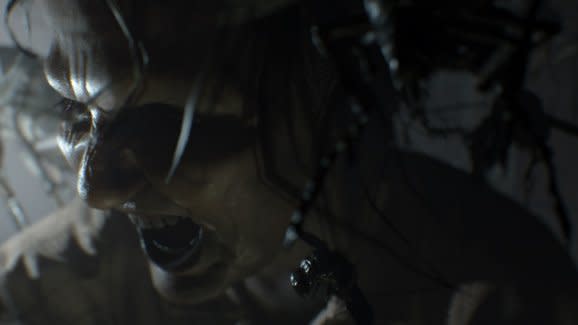
I’ve played the beginning of Resident Evil 7: Biohazard, the new Capcom game debuting today on the PlayStation 4, Xbox One, and Windows PC. I was spellbound by the quality of the graphics that do such a good job of depicting the imagery of fear.
Shadows, creaky doors, ladders that go down into the dark. This is the atmosphere of a horror game, and it’s a departure from previous Resident Evil games where action and blowing the heads off zombie-like creatures were the norm. This is more like a knife in the dark and lots of jump scares.
It’s enough to bring back bad memories as the original Resident Evil was slow-paced and horrifying. Resident Evil is clearly disturbing, no matter what kind of game it is, action or horror. I did an email interview about this with longtime series producer Masachika Kawata.
Here’s a transcript of our interview.
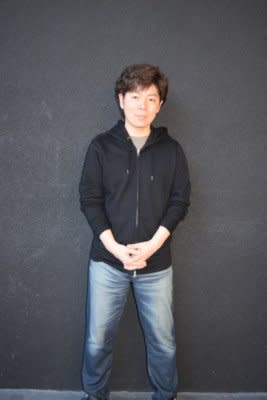
Above: Masachika Kawata, producer of Resident Evil 7: Biohazard.
Image Credit: Capcom
GamesBeat: What does RE7 have in common with the previous games in the franchise?
Masachika Kawata: RE7 definitely draws influence from its predecessors, but probably has most in common with the original game. At its core, RE7 is also like the other RE games in that it is still a game centered on elements of fear and being able to overcome it.
GamesBeat: What signature RE elements can fans expect from RE7?
Kawata: RE7 draws on the series’ survival horror roots with elements like tense atmosphere, exploration, item management, combat, and puzzle-solving.
GamesBeat: What is new or different?
Kawata: One of the biggest changes of course is the change to first-person perspective, which is new for the series. We had decided to focus more on horror and felt that this perspective lent itself well to the immersion. We also created the new RE Engine which allows us to create a photorealistic experience that really draws players in.
GamesBeat: Why a return to horror?
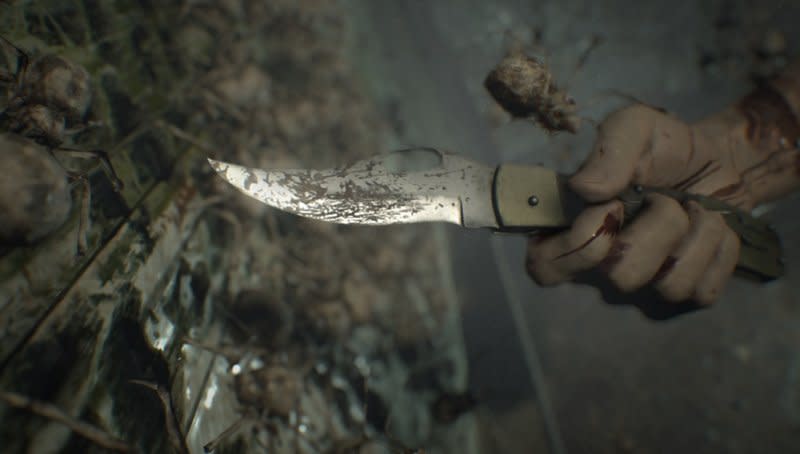
Above: You get to use this knife in Resident Evil 7: Biohazard.
Image Credit: Capcom
Kawata: After having gone to a massive global scale with RE6, we didn’t think trying to go bigger would be the right way to go. So, we changed things up by deciding to go the other way and create a more intimate, personal horror experience. Fans have also been giving us a lot of feedback over the years about wanting to see more horror, and after the great reception for RE Revelations and the HD remaster of Resident Evil, that helped to reinforce the direction.
GamesBeat: How fast-moving will the enemies be? A lot of games in this genre vary the speed of the enemies. How important is this?
Kawata: This time around we have the formidable Baker family that you’ll have to face, which means humans are your enemies. It’s not necessarily about how fast the enemies are that make them formidable. Humans are probably the scariest adversaries available because they are relatable, yet unpredictable. This adds an extra layer to the challenge that isn’t just based on speed alone.
GamesBeat: How did the Kitchen virtual reality demo tie in with the development of RE7?
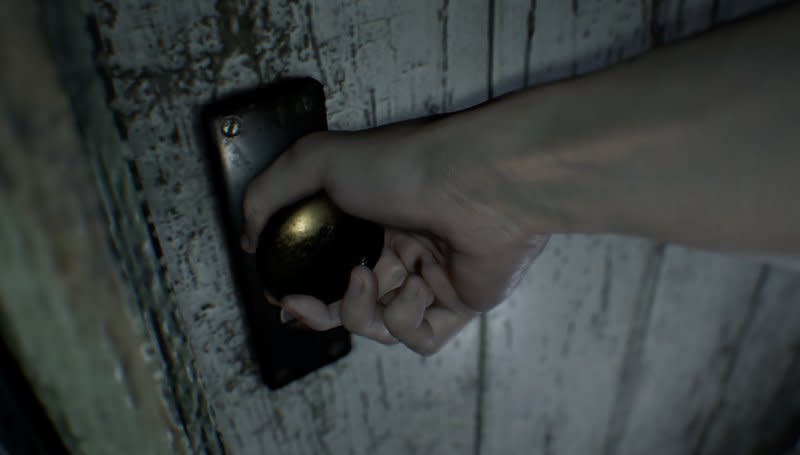
Above: No, don’t open that door!
Image Credit: Capcom
Kawata: We had already begun development for RE7 with the first-person perspective and the new horror direction. As we were starting development, PSVR also became available to us so we created Kitchen as a bit of a test to see if first-person in VR would work well with horror. The reception we got from players was incredible, so from thereon we decided to make it an option to play the whole game in VR.
GamesBeat: Why the decision to add the VR option?
Kawata: After the great reception for the Kitchen tech demo we created, we decided to also create the option for players to play as little or as much of the game in VR as possible. The base gameplay content is the same, but VR adds to the sense of immersion which can help heighten the horror experience in the game.
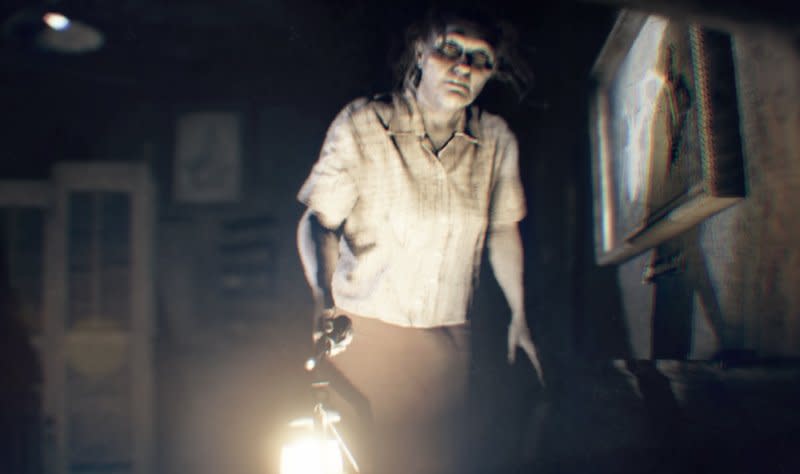
Above: Oh dear. Not good.
Image Credit: Capcom
GamesBeat: How did the team pick the game location of Louisiana?
Kawata: A lot of horror scenarios take place in rural America as these locations tend to be isolated and are far from more populated cities. So a setting of an abandoned plantation in Louisiana fit in with the sense of isolation that would work well with the horror theme.
GamesBeat: Is this the most horrifying Resident Evil experience yet? If so, what do you attribute that to?
Kawata: We hope so! In fact, everything in the game has been designed to contribute to the overall horror experience –the first person-perspective, the audio design, the photorealistic graphics, the scenario of facing human enemies, the setting… We really took great care in every aspect to deliver the best RE horror experience possible and we hope that players enjoy the results of the team’s hard work.
GamesBeat: Do you prioritize horror, which has a slower pace, over action?
Kawata: I think it’s a balance. You need both lows and highs because horror has a lot to do with not knowing what to expect. If a player becomes too used to a slow pace or too used to action, they can become desensitized and there’s less impact from what’s happening.
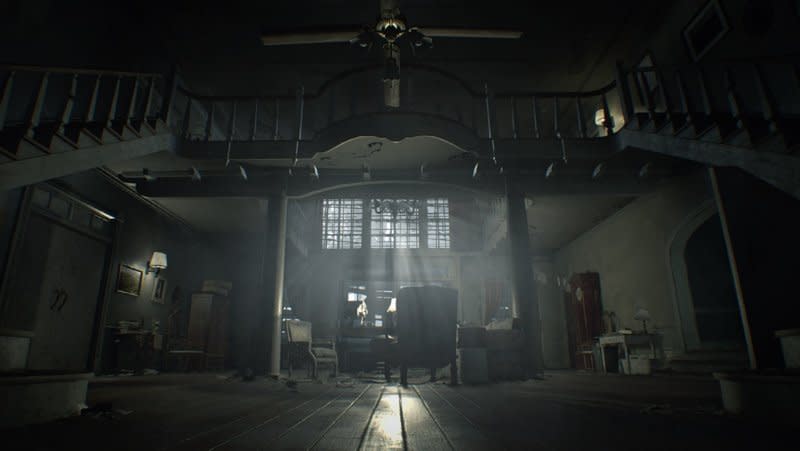
Above: Shadow and light in Resident Evil 7: Biohazard
Image Credit: Capcom


